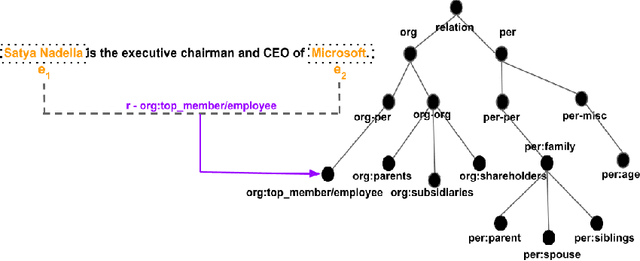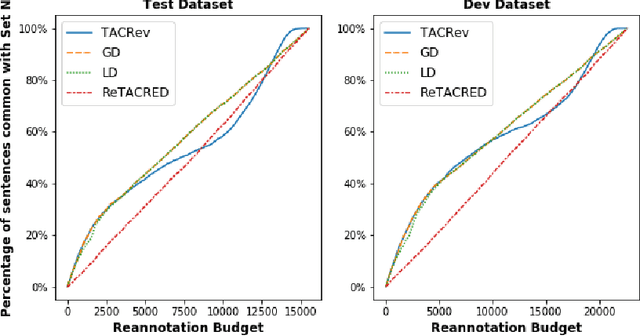Budget Sensitive Reannotation of Noisy Relation Classification Data Using Label Hierarchy
Paper and Code
Dec 26, 2021



Large crowd-sourced datasets are often noisy and relation classification (RC) datasets are no exception. Reannotating the entire dataset is one probable solution however it is not always viable due to time and budget constraints. This paper addresses the problem of efficient reannotation of a large noisy dataset for the RC. Our goal is to catch more annotation errors in the dataset while reannotating fewer instances. Existing work on RC dataset reannotation lacks the flexibility about how much data to reannotate. We introduce the concept of a reannotation budget to overcome this limitation. The immediate follow-up problem is: Given a specific reannotation budget, which subset of the data should we reannotate? To address this problem, we present two strategies to selectively reannotate RC datasets. Our strategies utilize the taxonomic hierarchy of relation labels. The intuition of our work is to rely on the graph distance between actual and predicted relation labels in the label hierarchy graph. We evaluate our reannotation strategies on the well-known TACRED dataset. We design our experiments to answer three specific research questions. First, does our strategy select novel candidates for reannotation? Second, for a given reannotation budget is our reannotation strategy more efficient at catching annotation errors? Third, what is the impact of data reannotation on RC model performance measurement? Experimental results show that our both reannotation strategies are novel and efficient. Our analysis indicates that the current reported performance of RC models on noisy TACRED data is inflated.
 Add to Chrome
Add to Chrome Add to Firefox
Add to Firefox Add to Edge
Add to Edge